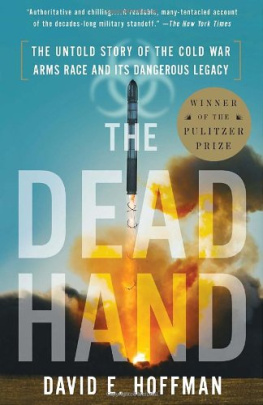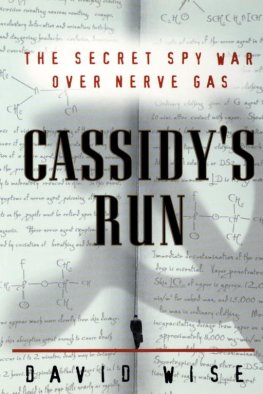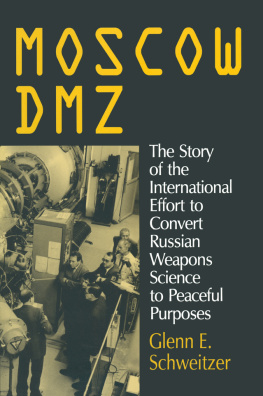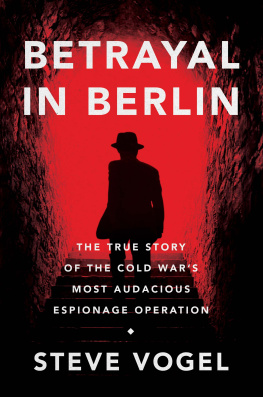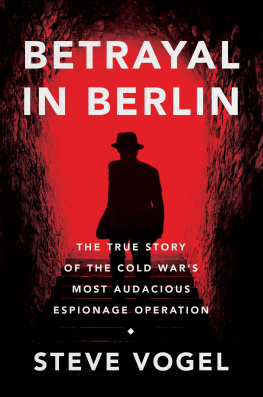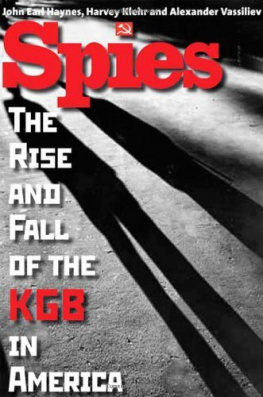Also by David E. Hoffman
The Dead Hand: The Untold Story of the Cold War Arms Race and Its Dangerous Legacy
This is an uncorrected eBook file. Please do not quote for publication until you check your copy against the finished book.
Copyright 2015 by David E. Hoffman
All rights reserved. Published in the United States by Doubleday, a division of Random House LLC, New York, a Penguin Random House Company, and in Canada by Random House of Canada Limited, Toronto, Penguin Random House companies.
doubleday and the portrayal of an anchor with a dolphin are registered trademarks of Random House LLC.
Everything we do is dangerous.
Prologue
T he spy had vanished.
He was the most successful and valued agent the United States had run inside the Soviet Union in two decades. His documents and drawings had unlocked the secrets of Soviet radar and revealed sensitive plans for research on weapons systems a decade into the future. He had taken frightful risks to smuggle circuit boards and blueprints out of his military laboratory and handed them over to the CIA. His espionage put the United States in position to dominate the skies in aerial combat and confirmed the vulnerability of Soviet air defensesthat American cruise missiles and bombers could fly under the radar.
In the late autumn and early winter of 1982, the CIA lost touch with him. Five scheduled meetings were missed. Months had gone by. In October, an attempt to rendezvous with him failed because of overwhelming KGB surveillance on the street. Even the deep cover officers of the CIAs Moscow station, invisible to the KGB, could not break through. On November 24, a deep cover officer, wearing a light disguise, managed to call the spys apartment from a pay phone, but someone else answered. The officer hung up.
On the evening of December 7, the next scheduled meeting, the future of the operation was put in the hands of Bill Plunkert. After a stint as a navy aviator, Plunkert had joined the CIA and trained as a clandestine operations officer. He was in his mid-thirties, six feet two, and had arrived at the Moscow station in the summer for a tour devoted to handling the spy. He pored over the files, studied maps and photographs, read cables, and talked to the case officers. He felt he knew the man, even though he had never met him face-to-face. His mission was to give the slip to the KGB and make contact.
In the days before, using the local phone lines they knew were tapped by the KGB, a few American diplomats had organized a birthday party at an apartment for Tuesday evening. That night, around the dinner hour, four people walked to a car in the U.S. embassy parking lot, under constant watch by uniformed militiamen who stood outside and reported to the KGB. One of the four carried a large birthday cake. When the car left the embassy, a woman in the rear seat behind the driver held the cake on her lap.
Driving the car was the CIAs chief of station. Plunkert sat next to him in the front seat. Their wives were in back. All four of them had earlier rehearsed what they were about to do, using chairs set up in the Moscow station. Now the real show was about to begin.
Espionage is the art of illusion. Tonight, Plunkert was the illusionist. Under his street clothes, he wore a second layer of clothes that would be typical for an old Russian man. The birthday cake was fake, with a top that looked like a cake but concealed a device underneath created by the CIAs technical operations wizards. Plunkert hoped the device would give him a means of escape from KGB surveillance.
The device was called the Jack-in-the-Box, known to all as simply the JIB. Over the years, the CIA had learned that KGB surveillance teams almost always followed a car from behind. They rarely pulled alongside. It was possible for a car carrying a CIA officer to slip around a corner or two, momentarily out of view of the KGB. In that brief interval, the CIA case officer could jump out of the car and disappear. At the same time, the Jack-in-the-Box would spring erect, a pop-up that looked, in outline, like the head and torso of the case officer who had just jumped out.
To create it, the CIA had sent two young engineers from the Office of Technical Service to a windowless sex shop in a seedy area of Washington, D.C., to purchase three inflatable, life-sized dolls. But the dolls were hard to inflate or deflate quickly. They leaked air. The young engineers went back to the shop for more test mannequins, but problems persisted. Then the CIA realized that given the distance from which the KGB followed cars in Moscow, it wasnt necessary to have a three-dimensional dummy in the front seat, only a two-dimensional cutout. Illusion triumphed, and the Jack-in-the-Box was born.
The device had not been used before in Moscow, but the CIA had grown desperate as weeks went by, with no contact with the agent. A skilled disguise expert from headquarters was sent to the Moscow station to help with the device and to bring Plunkert some sterile clothing that had never been worn before, to avoid any telltale scents that could be traced by KGB dogs or any tracking or listening devices that could be hidden inside.


